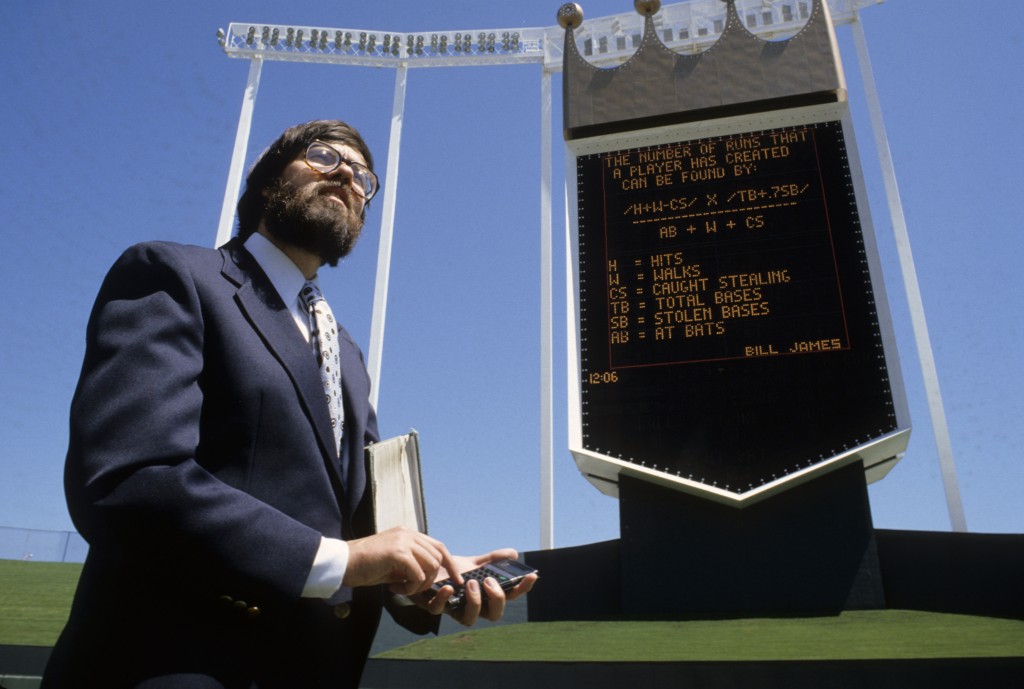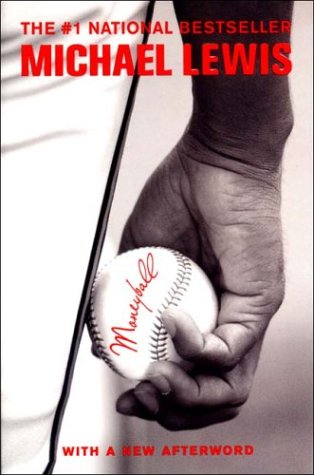 Somewhere along the line baseball became more than just a game.
Somewhere along the line baseball became more than just a game.
Once upon a time, baseball was a simple game. The goal is to score more runs than your opponent. Each team is given 27 outs to score as many runs as they can. In order to score runs, a team’s players have to get on base. Once a player gets on base it was the other players’ jobs to drive them home to score runs. On the other hand, the defense’s job is to get 27 outs allowing the opposition to score the fewest amount of runs. Whoever scores more runs in 9 innings of play wins – simple.
Now let’s fast forward to the 1980s. The 1980s were famous for Nintendo, big hair bands, Reaganomics, and the invention of rotisserie baseball.
Fantasy baseball exploded onto the scene in the 80s, and the men that played this game were looking for ways to build better teams. They wanted to build better teams in order to take home the lucrative prize money that came along with winning their rotisserie league. They used different combinations of stats to form equations, which in return would spew out which players they should select on their team.
Yes, the advanced stats that the game uses today were ultimately developed by men that maybe never even played the game. They were simply looking to build better fantasy teams. It leads the people with advanced knowledge of how the game is played on the field to butt heads with those that sat at their desk and computer doing all the math.
Bill James, the father of advanced statistics and sabermetrics, didn’t start to gather a serious following until the mid to late 1990s. Until then, he published his yearly baseball reviews and would sell 500 copies per year if he was lucky.
The game wasn’t ready for the story he was trying to tell. James was basically telling everyone in the game that they have been looking at the game improperly for nearly 100 years. Advanced statistics were born. He broke down nearly every single aspect of the game, except defense, which he was never able to develop an accurate statistical rating for.
But did the game really need the advanced statistics?
The game had survived over 100 years just fine without advanced statistics. But now, in every team’s organization, there are mathematicians working in this area. The question is, is it really necessary?
The reason why sabermetrics and advanced statistics took over the game in the 90s is because that is the when player salaries started to get to the point where some sort of projection and analysis was needed. Owners wanted to know if it was really worth it to spend the money on player X.
Baseball had officially become a full-fledged business.
In every MBA program across America, students are often required to take a course dedicated to statistics and spreadsheet analysis. The students are taught how to use Excel spreadsheets and programs like Risk Solver to make business decisions. If you are under the assumption that the CEO of a big company makes decisions based on his/her gut you are mistaken.
More often than not, the decisions are made by a computer than runs simulations based on the data that the decision maker inputs. The program takes all the data and then it gives you the most logical decision after running all the simulations.
It’s actually pretty cool. You could build a model that can tell you the best location to build an ice cream shop, based on three different locations, with three different average yearly temperatures, three different traffic patterns, and three different populations in the towns they’re in. Not only will it tell you the best location to build your ice cream shop, but the expected revenue at each location.
The same thing can be done with baseball players – in theory that is.
Everyone knows that Billy Beane and Paul DePodesta’s use of advanced statistics and sabermetrics officially put them on the map. Their use was chronicled in the book Moneyball by Michael Lewis.
Beane used the advanced statistics to remain competitive with a team that had the lowest payroll in the league. Once he started winning, people started to question how the heck the Athletics could be winning when they were only spending one-third of the money of the other teams. At that point, every Tom, Dick and Harry fell in love with sabermetrics.
Sabermetrics became the key to unlocking hidden baseball talent.
But here is the fundamental flaw with peoples’ understanding of what Billy Beane actually did – Beane wasn’t intentionally trying to win by spending the least amount of money he could. Beane wanted to spend money. He wasn’t trying to do his owner a favor by spending the least amount of money on building a team. He was simply in a situation where his hands were tied. He had to think outside of the box. He had to get more efficient with spending what little money he had. That’s it.
Somehow Beane’s strategy became an excuse for teams to spend less money, and try to build teams using a philosophy that Beane only developed because he had to and not because he wanted to.
Players are now investments, plain and simple. If a team is going to make an investment, the projections, spreadsheets, models and simulations have to all tell the same story – that the player is worth the investment.
However, there is a problem with advanced statistics – the game is still ultimately played on the field. You cannot remove the human element from the game, and no statistic can factor that in. And while past performance is a good indicator of future performance, there is only so much weight that advanced statistics should carry.
Advanced statistics paint an imperfect picture of the game when used improperly. Here is why:
Advanced statistics use inputs which are plugged into an equation and are determined by the person developing the statistics in order to arrive at a desired outcome. They often have to finagle with different stats until they get an answer that makes sense. What also comes into play is the developer’s bias.
If someone is playing with stats in order to make their equation work, how is that more accurate in telling me which player is better than if I used the old school statistics (OBP, AVG, ERA, etc.) which have been used for the past 100-plus years, and my eyes, used to watch the players play?
Let’s take a look at the Holy Bible. There is a show on TV that comes on one of the learning channels every once in awhile which basically alludes to the fact that the bible has a hidden code in it, which not only predicted things that happened in the past, but also can predict future events. Now on the surface, they did prove that there was a code in the bible. But is there really a code in the bible, or was it manipulation by the developer to come to a desired goal/outcome?
Odds are there isn’t a code in the bible, but this just shows how the manipulation of data can get to a desired outcome when played with long enough. One of the major issues with scientists to this day is trying to conduct scientific studies and not have their bias come into play. Bias alters outcomes.
The bottom line is that baseball is still a game where there is still a lot of luck involved. For instance, if a player is half a step to the left or right, a ball drops in that maybe shouldn’t have been a hit. Which stat factors any of these things in? The argument is the law of averages balances everything out. In the end, the math is the constant.
However, there are internal and external factors affecting the game constantly. These factors cannot be built into models. These factors cannot be accounted for statistically.
Where a card counter at the black jack table can turn the odds against the Casino by using probability and a system of advanced mathematical equations to gain an advantage, there is a set number of cards in the deck, and only a certain number of things can occur to account for. You can’t do that in baseball. In baseball, there are an infinite number of things all taking place simultaneously which affect the outcome of every pitch.
The problem at large is that the game has changed significantly since the introduction of advanced statistics. There are too many statistics which are complicating the game. They cause managers to over-manage situations.
For example, is a lefty specialist really necessary in a team’s bullpen? According to advanced statistics they are. But when it’s all said and done a bullpen pitcher is simply a pitcher who could not make it as a starting pitcher. Very few pitchers are groomed to be in the bullpen. In other words, why would I bring a pitcher into a game, and take out my better pitcher, simply because statistics show that one guy is better at getting left-handed batters out?
It doesn’t make sense. The best players should be on the field.
Statistics tell front offices they need lefty specialists. They tell the manager that they better go against their gut which tells them to leave their better pitcher in the game. It sounds crazy when you think about it. I’m going to take out my better pitcher because statistics show that over time, a pitcher of lesser quality has done a better job of getting left-handed hitters out? It doesn’t sound logical.
Now I have decided to take my best pitcher available out of the game to bring in a lefty specialist in order to get one hitter out. After he gets that batter out, I have to take him out of the game to put in an even lesser quality pitcher? Why not just leave my best pitcher in to get the lefty out. Now I have changed the odds of getting the remaining hitters out, all because stats have told me to take my best pitcher out of the game.
The entire landscape of the game changed because of a single stat.
Is there a stat that shows the odds of getting the remaining hitters out in a game after I made that decision? There is a stat that shows me that I should bring a lefty specialist into the game, but not a stat that shows the odds that I will get the remainder of hitters out now that I made that pitching change.
That is just one example of how stats have changed the game, but the question that still remains is – are all of these advanced statistics helping or hurting the game?
Cases can be made for both sides, but the truth of the matter is that all these stats are really good when looked at from the surface. It’s how the people behind the scenes use them that will ultimately determine whether they are good or bad for the game.
Advanced baseball statistics is very similar to the app market for smart phones. App developers are always looking to develop the next Angry Birds, and stat developers are looking to develop the next stat which proves that they have the secret formula to determine who the best player in the league is.
There is no secret formula. Baseball is played on the field, not in a laboratory, and not in a computer program. There isn’t a single stat or mathematical equation that can determine the outcomes on the field.
Nothing will ever change that.
Follow Mitch Petanick on Twitter.

















